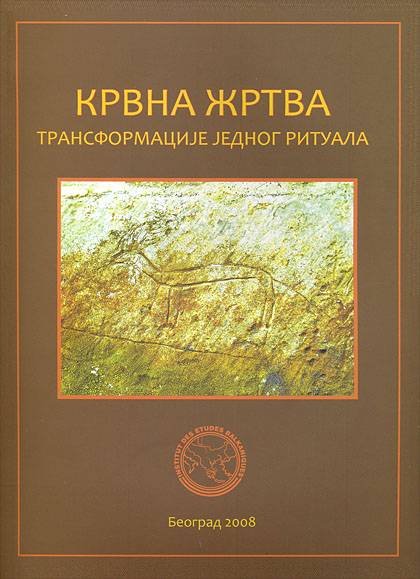News
Animal Sacrifice. The Transformation of a Ritual

The collection of studies Animal Sacrifice. The Transformation of a Ritual, published in Serbian, assembles the results of research on animal sacrifice which makes it a logical continuation of the volume Kurban in the Balkans,published in English in 2007 within the Special Editions series of the Institute for Balkan Studies, Serbian Academy of Sciences and Arts. The studies in this collection are grouped in three parts according to the research methods employed: Historical Perspective (which also covers oral history: Stanoje Bojanin, Kurban before kurban. Animal sacrifice in the pre-Ottoman Balkans; Miloš Luković, Kurban at the top of Petrova Mountain, south Serbia); the anthropolinguistic perspective (Vladimir Bocev, Kurban among the Macedonians; Sanja Zlatanović, Five images of Roma kurban; Annemarie Sorescu-Marinković, St George’s Day lamb and/or gurban for health; Tanja Petrović, Kurban as transnational practice. Kurban among Muslims in Slovenia; Biljana Sikimić, Gurban roads in Serbia: memory and researcher’s construction; Svetlana Ćirković, Kurban for the deceased. Anthropolinguistic and cognitive linguistic analysis of temporal categories; Aleksandra Djurić-Milovanović, Gurban: between Ripanj and Bela Crkva; Smiljana Djordjević, Animal sacrifice in the posthumous customs of colonist Serbs in Omoljica) and the Perspective of Ethnolinguistic Geography (Anna A. Plotnikova, Ethnolinguistic geography of the Balkans: winter and summer sacrifice; Andrej N. Sobolev, On Balkan names for the sacrificial animal on St George’s Day). The collection includes completely new studies written specifically for this occasion, as well as partially or completely reshaped contributions to the volume Kurban in the Balkans; in most cases, the authors have added fresh linguistic observations as well as transcribed field conversations which could not find their place in the English version. These substantial modifications required a different structuring of the volume and ample reference to the previous collection of studies.